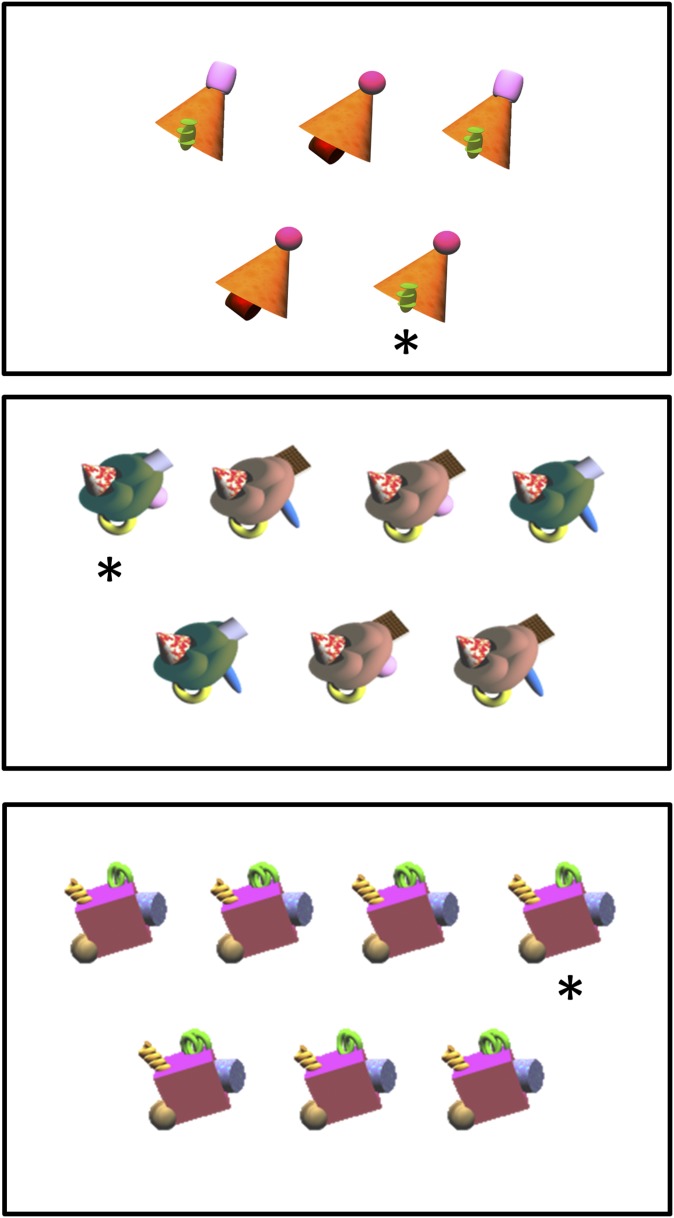Fig. 6.
Sample displays. The task was to identify the unique object (asterisk). (Top) A representative display from difficulty level 1. This display consisted of two twin pairs and one unique object. Each appendage of the unique object always appeared on another twin pair, so that more than one appendage always needed to be considered to distinguish the unique object from the twin pairs. (Middle and Bottom) Representative displays from difficulty level 4 and 6, respectively. Each display consisted of three twin pairs and one unique object. At these difficulty levels, two appendages of the unique object appeared in the same form on every other object. A third appendage of the unique object appeared on one of the twin pairs in the display, and the fourth appendage of the unique object appeared on a different twin pair. Thus, as at all difficulty levels, every appendage appeared on more than one object, and the unique object could not be identified by the presence of a single feature. Instead, the conjunction of two appendages defined the unique object.

